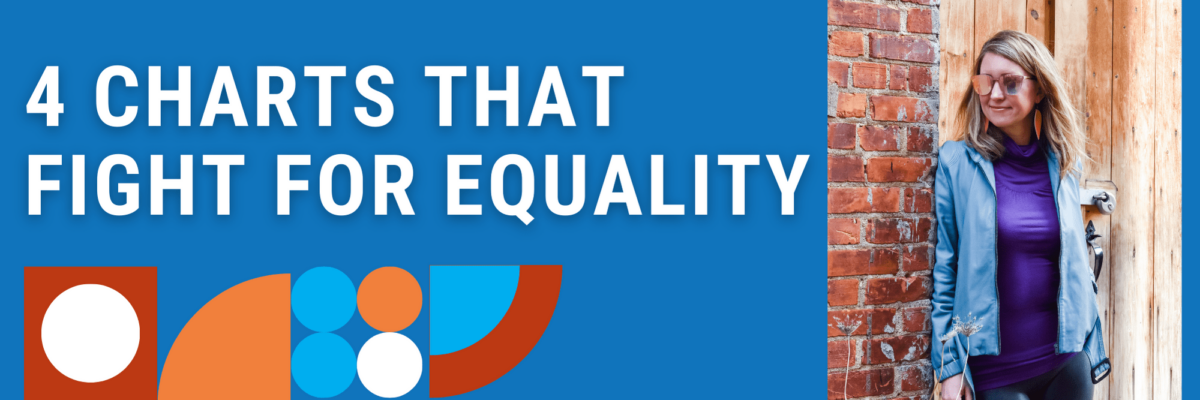Data can be a pillar of peace. It can support the stories people have been writing, blogging, and screaming into megaphones. Particularly when the stories haven’t been sufficient to make certain audiences finally listen. Data and stories can team up to create a solid wall of evidence that can’t be ignored.
When I am working clients to share data about inequity that should be questioned and answered, I have four go-to chart types that broadcast that message loud and clear.
Dumbbell Dot Plots
Dumbbell dots connect two or more data points with a line. The line draws attention to the space between the dots. The line can be thin or thick – go thick if you are trying to emphasize the distance between the data points.
I use these whenever the story in the data is about gap or disparity. Dumbbell dots make it easy to see how the gap is growing or shrinking.

This graph is the entry point for more questions – like, WHY is there such a gap? Why is the gap STILL happening? What systemic, underlying issues in society are contributing to this gap and how do we fix them?
Back-to-Back Charts
Back-to-back charts build on our ability to see symmetry. We notice general mirror/butterfly patterns and when something is asymmetrical.
No doubt, the asymmetrical Chronic Lower Respiratory Diseases in white men popped out at you because it doesn’t follow the general pattern of greatest to least on either side of this chart. I added in color to highlight other causes of death that are not equal for either group.

If things were equal between these groups, we would see a perfect mirror image.
Proportion Plots
Since launching Proportion Plots, I have seen SO MANY extremely cool examples of how this graph can highlight inequality as a doorway to a discussion about solutions.
Richard Speigal made this one to talk about wealth in Britain.

Equality would mean that both sides of the proportion plot are the same and it would essentially look like a well-designed stacked bar in that case. Read more about Proportion Plots and download my Excel template here.
Slope Graphs
Slope graphs use a line to show increases and decreases. I mean, those stories jump out at you in this chart. In the case of this data set of poverty, we would hope to see all lines decreasing.

This also means slope graphs can tell powerful stories about sameness – the line would be flat. So if you were to show the primary languages spoken at your local school with teachers on one side of the slope and students on the other side, you’d hope that the lines were flat, indicating that the teachers were a reflection of their student body.
While ANY chart can fight for equality, if you plug the right data into it, these four in particular make the story jump off the screen.

